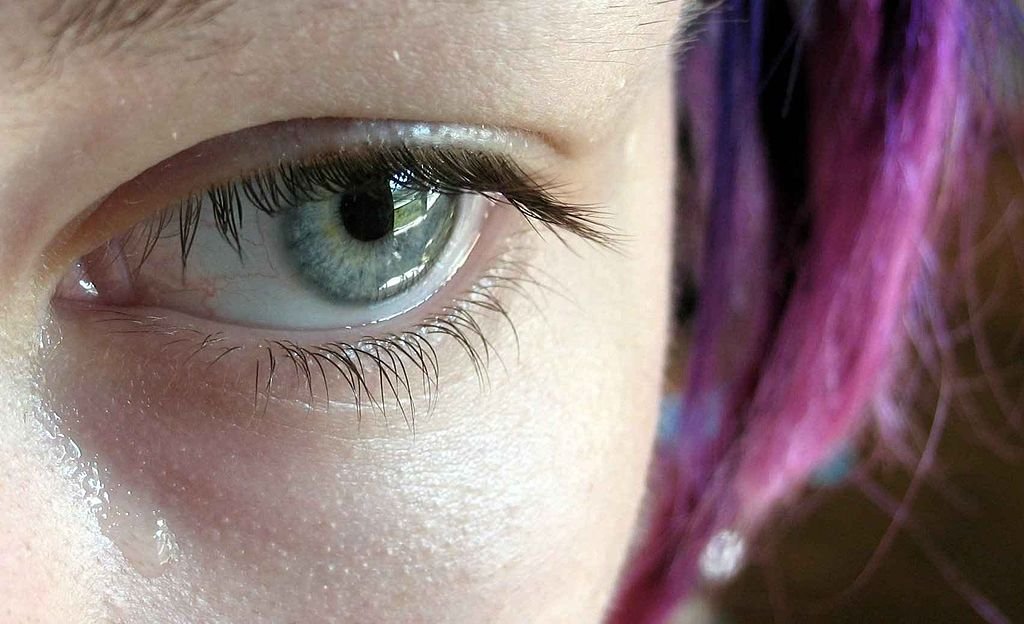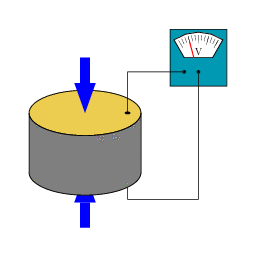While it's highly probable that you get tears in your eyes due to high electricity bills, I'm sure you never would have thought to use those tears, well, to generate electricity!
It seems this would be possible through the findings of a team lead by Aimee Stapleton et al. in the University of Limerick - Ireland.
Aimee, a physicist and postgraduate fellow at UL, and her team found that a protein called lysozyme, present essentially in the tears of mammals, as well as in saliva and milk, shows evidence of direct piezoelectric effect.

What is piezoelectricity?
Piezoelectricity is basically a term representing electricity resulting from mechanical pressure, manifesting normally via electric charges within solid materials including crystals, bones, DNA,... referred to as piezoelectric materials
It was first discovered by French physicists Jacques and Pierre Curie in 1880.
The term (Greek origins) basically derives from piezein (pressure) and ēlektron (amber) hence referring to pressure generated electricity.
The core current day implications of piezoelectricity include sensors, motors, and alternative power sources to name a few. Per the study's author:
Piezoelectric materials are employed in many actuating and sensing applications because they can convert mechanical energy into electrical energy and vice versa
Image below is an illustration of applying pressure on a piezoelectric disk to generate electricity

The study's results
The protein Iysozyme, is basically an antibacterial enzyme. As reported above, it is found in mammals' tears, saliva, and milk, but also in birds' egg whites.
Iysozyme was chosen as a potential subject of the study due to prior reports that its hydration water density changes with pressure, which is a basic property of piezoelectric materials, yet that still needs to confirm that the related output is electrical.
The study was able to successfully prove the theory, through measuring the piezoelectric outcome of applying pressure onto the protein, and hence confirming that lysozyme qualifies as a piezoelectric material.
Measurements were taken using a piezometer, and were to a notable degree.
The piezoelectric coefficient of tetragonal aggregate films of lysozyme ranged from approximately 1 pC N−1 to 6.4 pC N−1 with an average piezoelectric coefficient of 3.16 pC N−1
Why is this important?
This study's findings show a direct link between biological piezoelectricity and standard piezoelectricity, which allows utilizing Iysozyme as a means for clean piezoelectric energy conversion, and particularly due to the significant magnitude of the piezoelectric effect as generated throughout the experiment.
Being naturally biocompatible and piezoelectric, lysozyme may present an alternative to conventional piezoelectric energy harvesters, many of which contain toxic elements such as lead.
Future work
While this research might not, at the moment, allow you to cry your way out of electricity bills, yet it opens the door for advancements in the field.
One of such future expected improvements could lie in the field of piezosurgery, whereby utilizing efficient piezoelectric materials would allow operating machinery in dental surgery and other areas through precise mechanical vibrations.
The magnitude of the piezoelectric effect in lysozyme is appreciable and may motivate further research in the area of energy harvesting and flexible electronics for biomedical devices.
For complete details on the study itself, you can check link under reference 1 below.
Thank you for reading through!
References:
- http://aip.scitation.org/doi/10.1063/1.4997446
- https://en.wikipedia.org/wiki/Piezoelectricity
- http://www.iflscience.com/physics/possible-generate-electricity-tears/
Photo Credits:
A Proud member of MAP - Minnows Accelerator Project
MAP is a growing community helping talented minnows accelerate their growth on Steemit.
To join, check out the link at the home page of @accelerator account
One of my articles is featured in the MAP28 Contest "Six of the Best".
If you'd like to support me, please go to this post Minnow Accelerator Project MAP27 "Six of the Best" Contest. @accelerator/six-of-the-best-from-our-new-mapsters-map28-minnow-contest
And upvote my comment towards the bottom of the page, or just type the word "VOTE" under my comment.
Prior Posts:
If you enjoyed this post, you might want to check out some of my earlier posts:
- Scientific Breakthrough: Inherited Disease Successfully Removed From Human Embryo Via Base Editor
- Nobel Prize: Discovery of "How" Humans Adapt Their Biological Rhythms to the Rotation of Planet Earth!
- Misconception #9: Color of Mucus Determines if you Need Antibiotics (And Some Drs Still Believe It)
- Daily Mysteries #4: What Causes Left Handedness ? (New Study Findings)
- Daily Mysteries #3: Are you Missing a Muscle?
- Are Viruses .. Alive?
- Daily Mysteries #2: Why do we dream?
- Astro News: Gravitational Waves Detected for the 4th Time by 3 Observatories
- Daily Mysteries #1: Why do we often forget what we just left the room to do?
- Misconception #8: Caesarian C-Section Is Named After Julius Caesar
- Misconception #7: Nero Set Rome On Fire And Watched It Burn
- Misconception #6: Low Voltage Shocks Are Not Dangerous
My posts aim to be contribute to the following projects:
- #steemSTEM / @steemstem - A project to increase both the quality as well as visibility of Science, Technology, Engineering and Mathematics (and Health).
- #steemiteducation / @steemiteducation - A project to promote high quality educational posts on Steemit.
